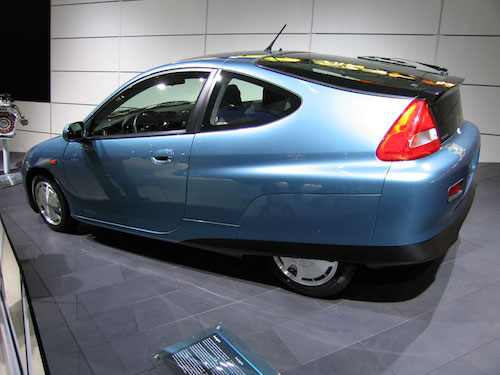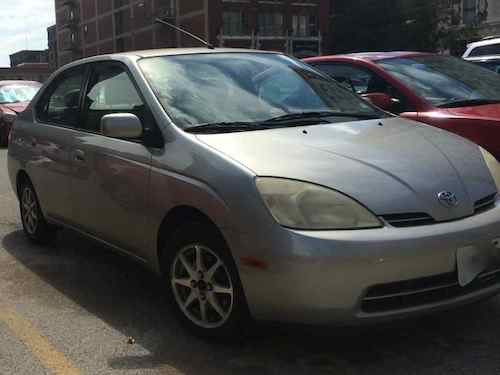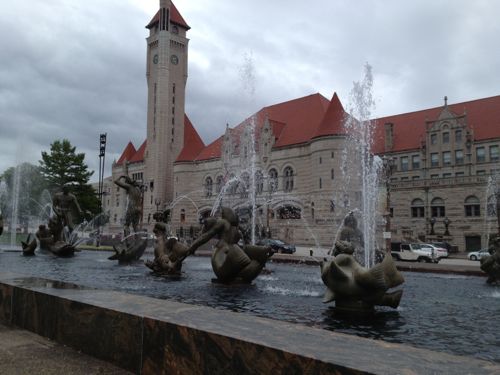Future Mainstream Automotive Tech, Poll Results
The first hybrid sold in America? If you said the Toyota Prius you’d be be wrong. Seven months before the Prius went on sale in the US, Honda introduced the 2-seat 3-door 3-cylinder Insight hybrid in December 1999.

For perspective, in 1999 GM produced 457 of the second generation EV1s. In 2000 Toyota brought the first generation Prius to America, a compact 4-door sedan. Hybrids were a niche product.

The documentary Who Killed the Electric Car was shown at the Sundance Film Festival in January 2006. However, by 2011:
The price premium for a hybrid compared to a similar conventional car is getting whittled down, in some cases to almost nothing–making fuel efficiency and low emissions increasingly a no-compromise affair. New affordable hybrid sedans, and the wider selection of a hybrid system as an option in a mainstream vehicle, are expected to at least double hybrid market share in the next five years, from about 2.5 percent in 2011 to 15 percent or higher in the next 10 to 15 years. That means millions of new hybrids on the road and a growing number of choices for consumers. (Hybrid Cars Go Mainstream)
The 2015 Lincoln MKZ Hybrid has the starting same price as the conventional model, $35,190. Hybrids, though not the majority, are now mainstream. Auto manufacturers use hybrid models to meet increasingly tough CAFE standards. Plug-in hybrids & electrics haven’t reached this level — yet. Which brings us to the results from last week’s poll:
Q: Which of the following, if any, will be mainstream within 20 years (pick up to 4)
- Electric vehicles 49 [34.51%]
- Plug-in hybrid vehicles 36 [25.35%]
- Self-driving vehicles 26 [18.31%]
- Fuel cell vehicles 18 [12.68%]
- None within 20 years 7 [4.93%]
- Unsure/no opinion 6 [4.23%]
I find the answers a bit confusing, more people think electrics will become mainstream than plug-in hybrids. The plug-in hybrid is often the stepping stone between a hybrid and full electrics — both for manufacturers and consumers. In the last 15 years hybrid/electric tech has come a long way, reflected in sales:
Sales of all electrified cars totaled 408,516 vehicles between January and August, down just a tick from the 408,694 vehicles sold during the same period last year.
Of that total, the bigger percentage gain came in plug-in hybrids, which grew from 28,241 vehicles sold to 40,748. Battery-powered EVs — with no gas engine at all — also grew, from 29,917 vehicles sold to 40,349.
But traditional hybrid sales fell from 350,530 vehicles from January to August last year to 327,418 during the same period in 2014.
The market share for electrified vehicles also fell. So far this year, they account for 3.66% of all vehicles sold, down from 3.84% for the same period a year ago. (Electrified car sales stall as buyers back away from hybrids)
As sales increase pieces will decrease, cheaper batteries will drive more sales:
The Gigafactory’s purpose is to streamline production of battery packs and bring down their cost, and subsequently the cost of electric cars. Tesla CEO Elon Musk has said the plant will be vital to the success of the Model 3, the brand’s upcoming lower-priced EV sedan. The Tesla Model S and Model X SUV, due later this year, will also benefit from the Gigafactory eventually, as the plant is expected to cut battery pack costs by at least 30 percent. (Tesla Chooses Nevada as Site for Gigafactory)
Ok, so Tesla will sell a less expensive model. What about the mass market?
Toyota and Tesla have been working together to produce battery packs and motors for the electrified RAV4 EV, but with the program soon coming to a close, the automakers are revealing they’re not ready to go their separate ways. The Japanese automaker has been vocal about wanting to continue working with the electric car company, while Tesla CEO Elon Musk recently revealed he’d like to see the same thing. (Musk: Tesla, Toyota Could Join Forces Again in Next Few Years)
Hard to say where we’ll be with plug-in hybrids & electric vehicles 20 years from now, but I think both will be mainstream within 15 years. Self-driving cars and fuel cell vehicles? I’m still not convinced. Here too we’re seeing repaid adoption:
The age of the self-driving car may soon be upon us. General Motors CEO Mary Barra revealed that we’ll start seeing semi-autonomous technologies in certain Cadillac models in as little as two years. (GM Semi-Autonomous Tech to Debut on All-New 2017 Cadillac Model)
Also see Entire Toyota Lineup to Feature Pre-Collision Tech by 2017.
Fuel cell vehicles are electric cars that generate electricity on-board rather than through the grid, solar, etc. Of the four I think fuel cells have the least chance of becoming mainstream in 20 years.None of us knows for sure, we’ll just have to revisit this issue in the future.
— Steve Patterson





